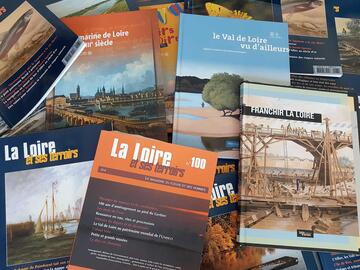
06/03/2025
[Fr] Décès de Philippe Auclerc
C'est avec tristesse que nous avons appris aujourd'hui le décès de Philippe Auclerc, co-fondateur de la maison d'édition "Loire et terroirs" et rédacteur...
Published on 04 February 2015 - Updated 11 February 2015
Cet article date d'il y a plus de 10 ans
Timbuktu lies at the gateway to the Sahara Desert, in Sudan’s most fertile region and close to the River Niger. One of Africa’s oldest cities, it attracted travellers from distant lands early on and became a name to conjure with in the Western world’s collective imagination. It was included on the UNESCO World Heritage List in 1988.
In 2000, the Loire Valley was inscribed on the World Heritage List – an inventory reflecting the richness and diversity of the planet’s cultural and natural heritage. This year, 15 years later, Mission Val de Loire extends you a monthly invitation to acquaint yourself with other World Heritage sites, which are also our heritage.
Founded in the 5th century, Timbuktu reached its economic and cultural apogee in the 15th and 16th centuries, becoming a centre for dissemination of Islamic culture with a university comprising 180 koranic schools and a 25,000-strong student population. In the streets of this intellectual and religious capital, scholars, engineers and architects from throughout Africa rubbed shoulders with sages and marabouts.
Timbuktu was also a crossroads for merchant caravans travelling trans-Saharan trails, where manuscripts and Teghaza salt from the north were bought and sold alongside gold, livestock and cereals from the South.
And it was the buildings testifying to this illustrious past that were inscribed on the UNESCO World Heritage List, including the three great mosques of Sankuru, Sidi Yahia and Djingareyber (whose minaret is one of the urban landscape’s most visible landmarks), which were originally built in the 14th century. Sixteen saints’ mausoleums are also on the List – edifices constituting outstanding examples of earthen architecture and traditional building maintenance techniques practised in Mali.
During the conflict that wreaked such havoc in 2012 and 2013, 14 of the 16 mausoleums were deliberately destroyed by the armed groups of extremists then occupying the city, who also set about destroying the famous manuscripts conserved in Timbuktu – manuscripts constituting a unique documentary collection: some 300,000 items, conserved at a cultural institute and by individual families and bearing witness to the history of Africa and of humankind as a whole, some of them dating back to the 13th century. 4000 manuscripts were burned or stolen, although the inhabitants managed to save most of the documents and have them removed to Bamako.
Timbuktu has been on the World Heritage in Danger List since 2012, when UNESCO committed itself to ensuring that the destroyed mausoleums were rebuilt by local masons, mosques rehabilitated and projects for conservation of ancient manuscripts implemented. Work is being carried out with the help of international funds (a donation campaign has also been organised to help safeguard Malian heritage) and with the local population’s participation. A recent conference on the subject was held in late January.
UNESCO Director-General Irina Bokova has stated that the restoration work concerned “will ensure that the people of Mali can reclaim heritage that is essential to their identity and that can contribute to reconciliation. This is vital for Mali and important for the rest of the world because World Heritage is common to us all”.